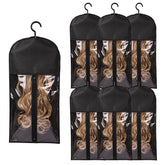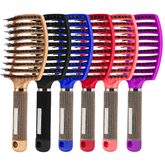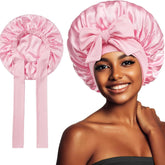The Dos and Don’ts of Cutting Your Own Hair at Home

Whether you're short on time, budgeting carefully, or just feeling adventurous, giving yourself a DIY haircut is tempting. But before you grab the scissors, it’s essential to understand the risks, techniques, and best practices. While many have emerged with a fresh cut and boosted confidence, others have ended up with uneven layers and last-minute trips to the salon. So—should you cut your own hair at home? Let’s take a closer look.
When a DIY Haircut Might Make Sense
Cutting your own hair is not always a mistake—in certain circumstances, it can be a suitable option. Here are situations when you might consider the DIY approach:
- Minor trims: Trimming split ends or a light fringe refresh is low risk if done with care.
- Time-sensitive fixes: For urgent occasions when a salon visit isn’t possible, a tidy-up might be better than unruly hair.
- Budget considerations: Though not a permanent solution, basic trims between professional appointments can stretch your styling budget.
- Simple hairstyles: Buzz cuts, undercuts or evenly trimmed bobs are easier to manage at home with the right tools.
It’s always safer if you have experience, watch credible tutorials, and use salon-quality tools like hairdressing scissors or electric clippers.
Avoid These Common DIY Haircut Mistakes
As tempting as it is to freestyle your way to great hair, there are definite DIY don’ts that could turn your home haircut into a hair horror story:
- Using kitchen scissors: These blunt tools tear hair rather than cutting cleanly, leading to split ends and an uneven finish.
- Cutting when wet without knowledge: Hair shrinks as it dries—cut too much while it's wet and you could lose more length than planned.
- Following random trends: TikTok tutorials or viral hacks may not suit your hair type or face shape. Stick to what works for you.
- Rushing the process: Hasty snips often lead to choppy, uneven results. Take your time or don't attempt it at all.
- Skipping the back view: Most DIY disasters happen because people can’t see what they’re doing behind their heads—invest in a handheld mirror or ask someone to help.
Preparation and a steady hand are critical. If you’re unsure, it’s better to wait until you can access professional help.
Tips for a Successful At-Home Haircut
If you’re committed to cutting your hair at home, here’s how to do it properly and reduce the risk of regret:
- Start small—trim less than you think you need to.
- Use professional shears specifically designed for hair.
- Cut vertically into the ends to blend and soften lines.
- Work with dry hair if you want a realistic shape and to avoid overcutting.
- Section your hair to ensure even cuts on both sides.
- Watch reputable, step-by-step video tutorials before starting.
- Have a backup plan—a stylist can fix minor unevenness if needed.
Confidence helps, but preparation ensures success. Never attempt a major change (like full fringe or layered cuts) unless you’re experienced.
Why It Matters
While DIY haircuts can save money and time, they also carry the risk of costly salon corrections if things go wrong. Understanding what’s realistic and learning basic techniques can empower you to maintain your haircut between professional visits without undoing the hard work of your stylist. When done right, DIY trims can help you stay polished, confident and on-budget.
Source: HELLO! Magazine
Published: 31 October 2025
Ready to refresh your look? Visit our online store for salon-quality tools and haircare products designed for safe at-home maintenance.







